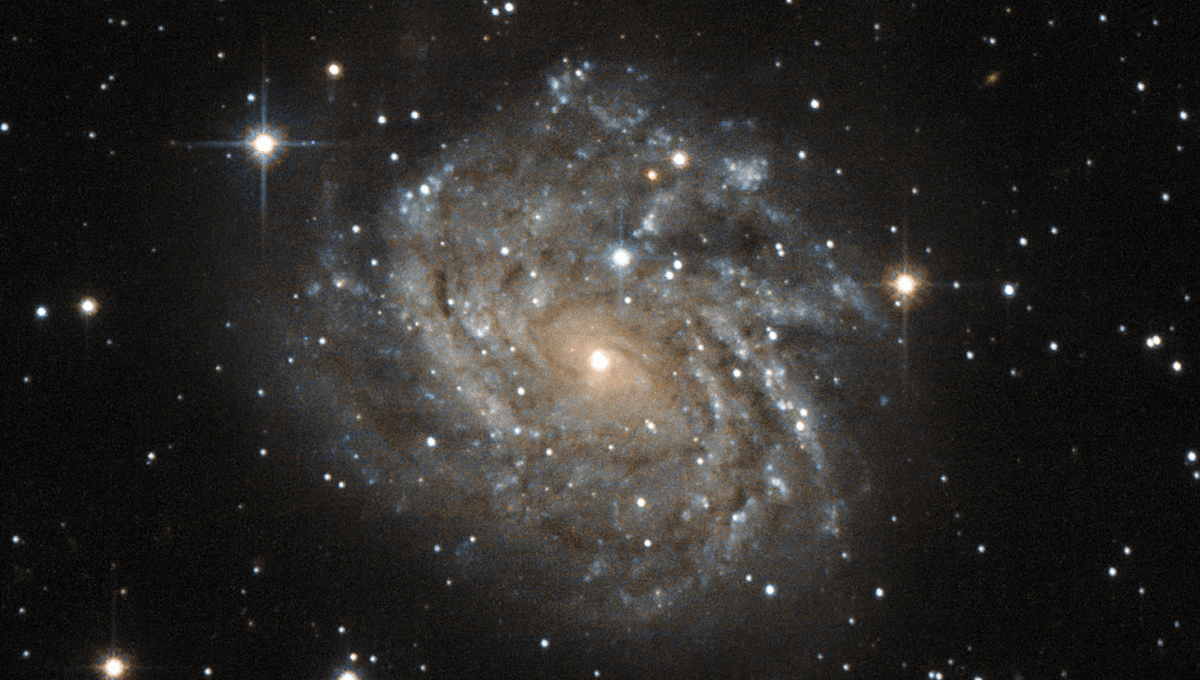
A population of stars more than 13 billion years old represents the original disk from which the Milky Way formed, a team of astronomers claim. By studying this population’s movements, the authors have reconstructed what they think is the shape of the proto-Milky Way, which they say is a relatively unusual starting point for galaxies like ours.
Our Milky Way galaxy is no giant, but it is much larger than the average galaxy in our part of the universe, a status it has achieved by consuming smaller collections of stars. The Gaia Space Telescope’s mapping of millions of stars’ locations and movements has enabled astronomers to detect collections of stars that were once part of these cannibalized galaxies, even when they have long been separated from their companions.
As impressive as this is, the ultimate step in understanding our galaxy’s development is to identify the original disk structure the Milky Way developed, before all these subsequent events. That’s a challenge since all the most massive, and therefore brightest, stars from that time have long since burned out. Moreover, the smaller stars that have survived would be well mixed.
Nevertheless, a team led by Dr Maosheng Xiang of the Chinese Academy of Sciences think they have done it, tracking the galaxy’s oldest stars and identifying differences between those more than 13 billion years old, and the relative youngsters born after 12.5 billion years ago. They have named the disk containing the 13+ billion-year-old stars PanGu.
Astronomers are on a quest to identify when the first stars appeared, but it was probably within 400 million years of the Big Bang, ie about 13.4 billion years ago. However, these early stars were not necessarily part of well-structured galaxies, instead being just dots of light within relatively amorphous gas. The Milky Way’s original structure has been thought to have emerged 12.5 billion years ago.
Xiang and colleagues challenge that. They argue that PanGu had stars with a combined mass of about 3.7 billion times the Sun’s, produced at a relatively steady rate over several hundred million years. Of these, 2.2 billion solar masses survive, the rest having blown up in supernova explosions, with 2 billion still in the disk. That represents just 0.2 percent of the Milky Way’s current mass, but is much more than dwarf galaxies such as the Sagittarius Dwarf Galaxy.
The team concludes the Milky Way achieved a peak in star formation around 11 billion years ago, when it was making new stars with a combined mass of 11 Suns each year. That’s a rather unusual path for galaxies that end up looking like our own, they say.
Previous studies of galaxy development showed a marked change around 8 billion years ago. Stars formed before that time have distinctly different chemistry and paths from those formed more recently. Breaking down those early stars into finer subgroups has been more difficult. If Xiang and colleagues are right, the majority of those early stars were formed during the peak they identified 11 billion years ago.
The component stars’ motion suggests the original disk wasn’t all that disk-shaped, starting out almost as high as it was wide. However, over time it flattened down to around a 10th of its original height, while barely changing in length and width.
Simulations suggest most early galaxy development occurs through violent mergers that disrupt the formation of well-structured disks, but that doesn’t seem to have been the case for the Milky Way. Similarly, attempts to trace the formation of spiral galaxies like our own indicate that less than one-sixth followed a similar path, the rest having suffered greater disruption.
The Sun did not form until long after these early developments had passed. We’re not aware of any way they could have left an imprint on the galaxy that led to different outcomes for us and our star compared to formation in a galaxy with a more violent history. Nevertheless, this is not a topic that is currently well understood.
PanGu is a doubly appropriate name. Individually, the character Pan means disk and Gu means old. Meanwhile, PanGu was a god in Chinese mythology responsible for separating heaven and Earth.
The paper is open access in Nature Astronomy.
[H/T: La Brújula Verde]
Source Link: Traces Of The Milky Way’s Original Disk Show Our Galaxy Is Unexpectedly Ancient